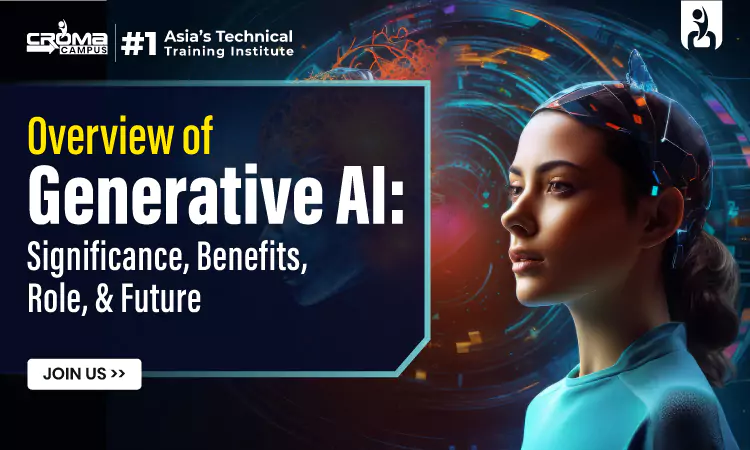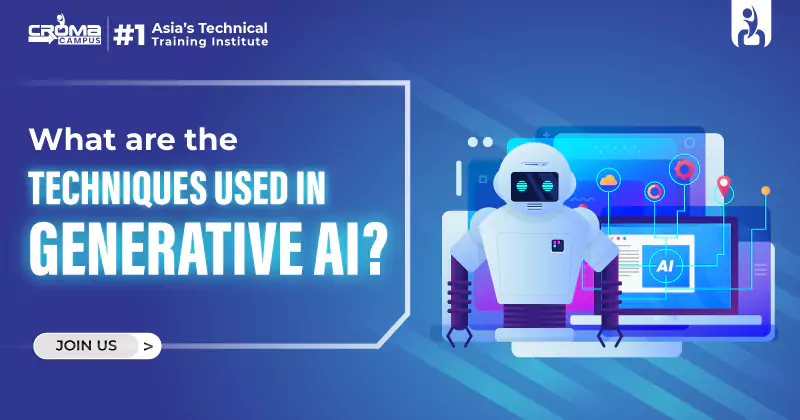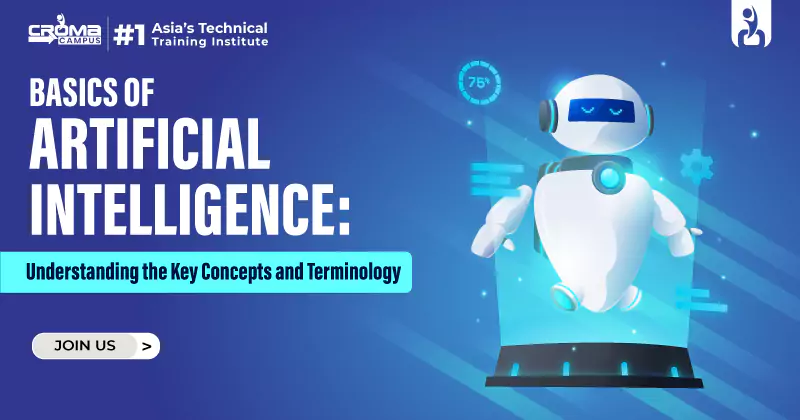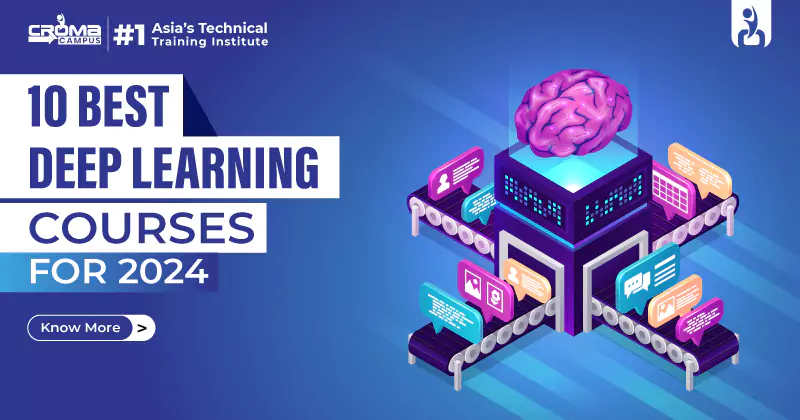Overview Of Generative AI: Significance, Benefits, Role, & Future
4.9 out of 5 based on 9857 votesLast updated on 25th Jul 2024 16.32K Views
- Bookmark

This blog provides an overview of generative AI, covering its importance, benefits, roles, and future potential.

Generative AI has emerged as a ground-breaking field within artificial intelligence, transforming how we create and interact with digital content. This web blog will help you have an overview of generative AI, exploring its significance, benefits, roles, and future prospects.
Introduction
Generative AI refers to a branch of artificial intelligence that focuses on creating models capable of generating new, original content that is indistinguishable from real data. This encompasses a variety of applications, including the creation of realistic images, coherent text, and even music and videos. Unlike traditional AI, which typically analyses or classifies existing data, the Generative AI Course employs sophisticated algorithms such as Variational Auto-encoders (VAEs) and Generative Adversarial Networks (GANs) to produce novel outputs by learning patterns and structures from vast datasets. This innovative approach not only enhances creative processes but also has practical implications in fields like entertainment, design, and personalized content generation.
Know the inception of Generative AI
The inception of generative AI traces back to the foundational work in artificial intelligence and machine learning in the mid-20th century. Early concepts of AI were heavily influenced by Alan Turing's 1950 paper, "Computing Machinery and Intelligence," which laid the groundwork for thinking about machine learning and intelligent behaviour.
However, it wasn't until the development of neural networks and deep learning techniques that generative AI truly began to take shape. In the 1980s, researchers developed algorithms like the Boltzmann machine and back-propagation, which enabled more complex and deeper neural networks, paving the way for the sophisticated models we see today.
A significant breakthrough in generative AI came with the introduction of Variational Autoencoders (VAEs) and Generative Adversarial Networks (GANs) in the early 2010s. VAEs, introduced by Kingma and Welling in 2013, provided a probabilistic approach to generating data by learning latent representations.
GANs, proposed by Ian Goodfellow and his colleagues in 2014, introduced a novel framework where two neural networks—the generator and the discriminator—compete in a game-theoretic setup to produce highly realistic data. These innovations marked a turning point, demonstrating the potential of generative models to create lifelike images, text, and other forms of content, and spurring widespread research and application in various fields.
Significance of Generative AI
- Generative AI has revolutionized creative industries by enabling machines to generate art, music, and design autonomously. Artists and designers can leverage these technologies to explore new creative possibilities, augmenting their capabilities and pushing the boundaries of traditional art forms.
- In the era of big data, personalization is key to improving user experiences. Generative AI enables the creation of highly personalized content, such as tailored marketing campaigns, customized product recommendations, and individualized user interfaces, enhancing engagement and satisfaction.
- It plays a critical role in scientific research by simulating complex systems, generating hypotheses, and discovering new compounds in fields like pharmaceuticals and materials science. These capabilities accelerate the research process and open up new avenues for innovation.
Benefits of Generative AI
Generative AI automates the creation of content, reducing the time and effort required in various domains. For instance, in gaming, AI can generate realistic environments and characters, significantly cutting down development time.
- By generating novel solutions and ideas, generative AI fosters innovation. It can explore a vast design space more quickly than humans, leading to the discovery of unique and efficient solutions in engineering, architecture, and other fields.
- Automation of content creation through generative AI can lead to significant cost savings. In industries like entertainment and advertising, where the production of high-quality content is expensive, generative AI provides a cost-effective alternative.
- Generative AI democratizes access to high-quality content creation Individuals and small businesses can now produce professional-grade content without the need for extensive resources, levelling the playing field and fostering creativity.
You May Also Read These Posts:
Know the Role of Generative AI
One of the primary roles of generative AI is in content generation. This includes creating images, videos, music, text, and more. Tools like DALL-E and GPT-3 have demonstrated the ability to generate realistic and coherent content, impacting industries ranging from media to marketing.
- Generative AI is crucial in data augmentation, where it generates synthetic data to enhance machine learning models. This is particularly valuable in scenarios where obtaining large amounts of labelled data is challenging or expensive, such as medical imaging.
- In scientific and engineering domains, generative AI is used to simulate and model complex systems. For example, AI-generated simulations can help in understanding climate change, predicting weather patterns, and modelling financial markets.
- In a way, Generative AI enhances human-AI collaboration by acting as a creative partner. It can provide suggestions, generate drafts, and assist in brainstorming sessions, augmenting human creativity and productivity.
Future of Generative AI
The future of generative AI is poised to bring remarkable advancements in the realism and coherence of generated content. As models become increasingly sophisticated, the quality and authenticity of AI-generated text, images, and other media will improve, making them nearly indistinguishable from human-created content. This progress will enable more widespread use in industries such as entertainment, marketing, and design, where high-quality content creation is crucial.
Additionally, the integration of generative AI in scientific research, healthcare, and education will revolutionize these fields by providing innovative solutions, enhancing simulations, and generating new knowledge at unprecedented speeds.
Moreover, ethical considerations and responsible use will play a significant role in the future development of generative AI. Some of the Generative AI Examples- addressing issues such as bias, copyright infringement, and misinformation will be essential to ensure that generative AI technologies are used responsibly and equitably.
Enhanced human-machine collaboration will also become more prevalent, with AI acting as a creative partner and assistant in various workflows, freeing humans to focus on higher-level tasks. As generative AI tools become more accessible and user-friendly, their democratization will empower individuals and small businesses, fostering a more inclusive and innovative technological landscape.
Ways to learn Generative AI
- Study the fundamentals of artificial intelligence and machine learning.
- Familiarize yourself with key concepts like supervised and unsupervised learning.
- Learn about neural networks, including architecture, activation functions, and back-propagation.
- Explore deep learning frameworks such as TensorFlow and PyTorch.
- Learn about Variational Auto-encoders (VAEs) and Generative Adversarial Networks (GANs).
- Implement basic projects using VAEs and GANs with datasets like MNIST.
- Progress to more complex projects like generating artwork, music, or text.
- Participate in workshops, webinars, and conferences to stay updated and network with professionals.
- Experiment with new models and techniques to deepen your understanding.
- Create and showcase your projects on platforms like GitHub.
- Share your work with the community for feedback and improvement.
Know the salary package in Generative AI
Salaries in the field of generative AI are highly competitive and vary based on factors such as experience, location, and the specific role. Entry-level positions, such as AI researchers or machine learning engineers specializing in generative models, can expect starting salaries ranging from $90,000 to $120,000 per year in the United States.
Mid-level professionals with a few years of experience can earn between $120,000 and $160,000 annually. Senior experts and those in leadership roles, such as AI directors or chief scientists, can command salaries upwards of $200,000 to $300,000 or more, especially in tech hubs like Silicon Valley.
Additionally, professionals in generative AI often receive substantial bonuses, stock options, and other benefits, reflecting the high demand and value of their expertise in the market.
Subscribe For Free Demo
Free Demo for Corporate & Online Trainings.
Your email address will not be published. Required fields are marked *





















 Master in Cloud Computing Training
Master in Cloud Computing Training